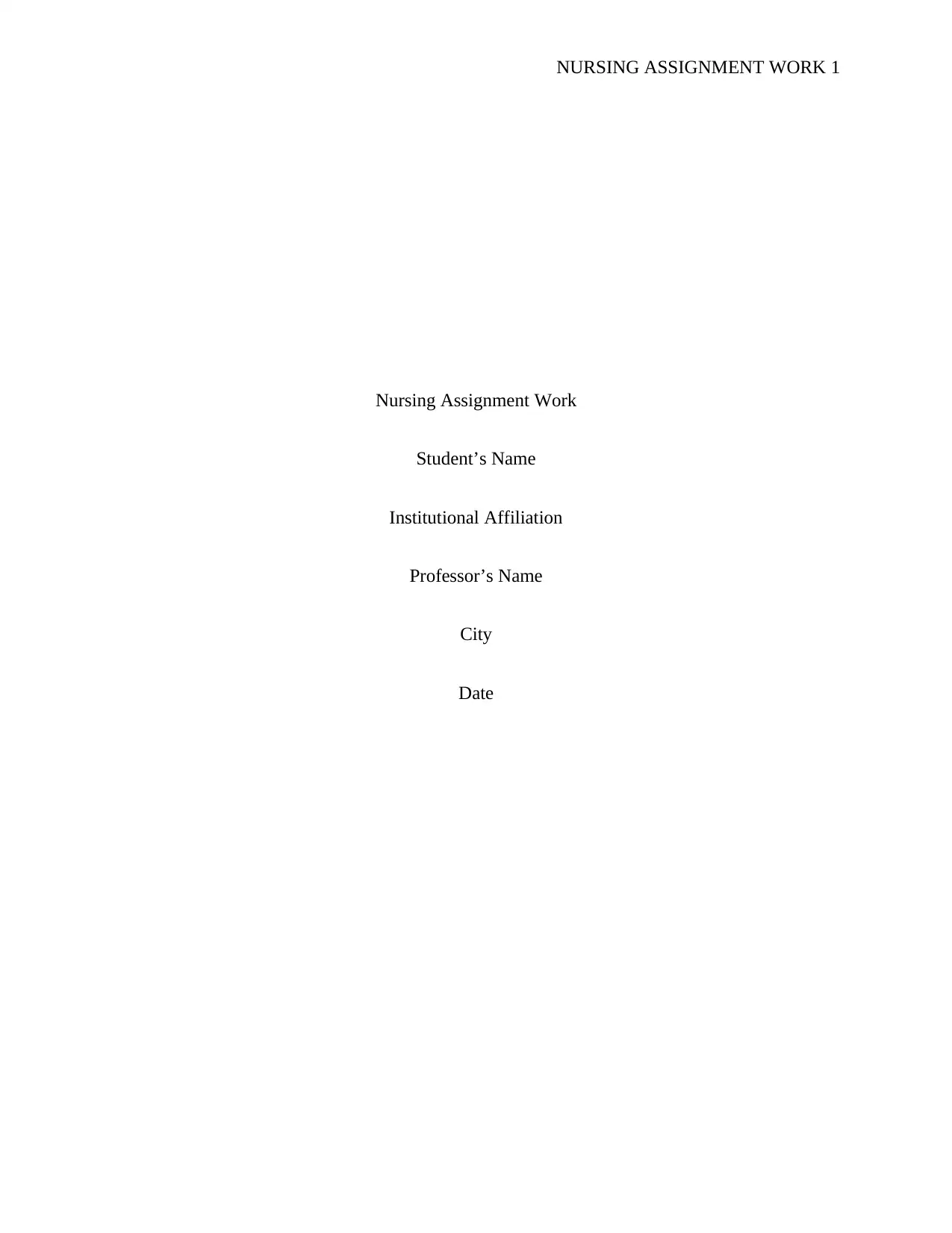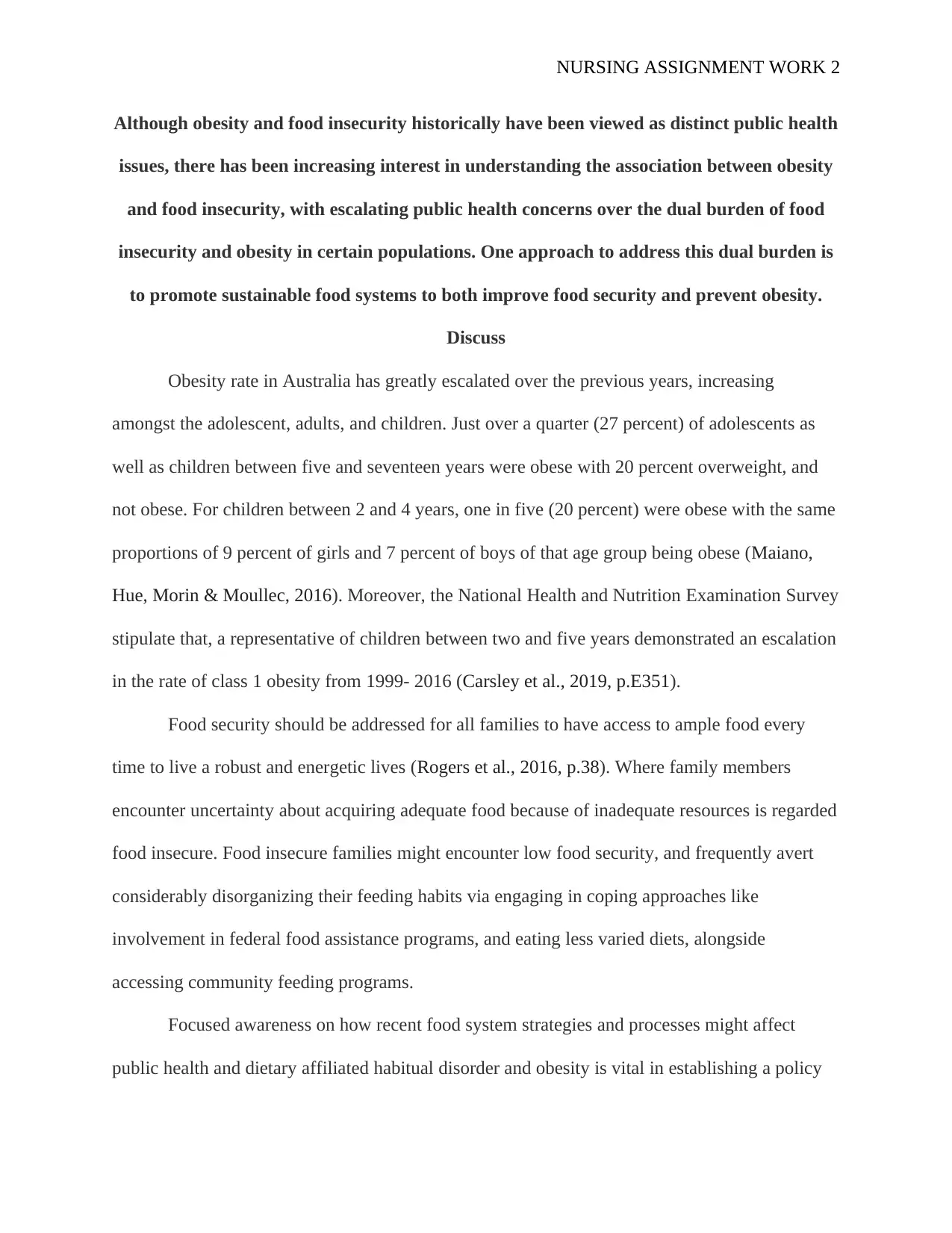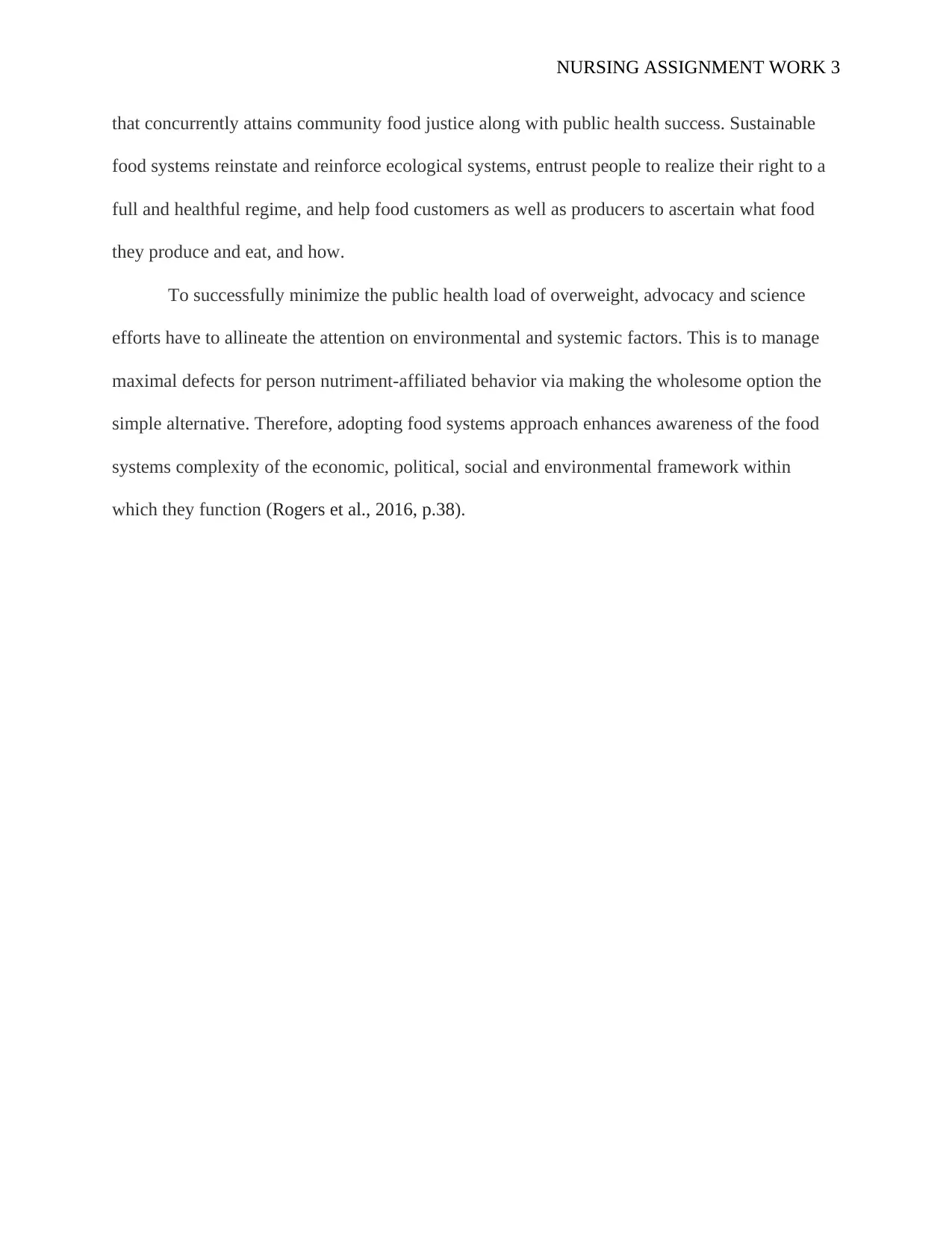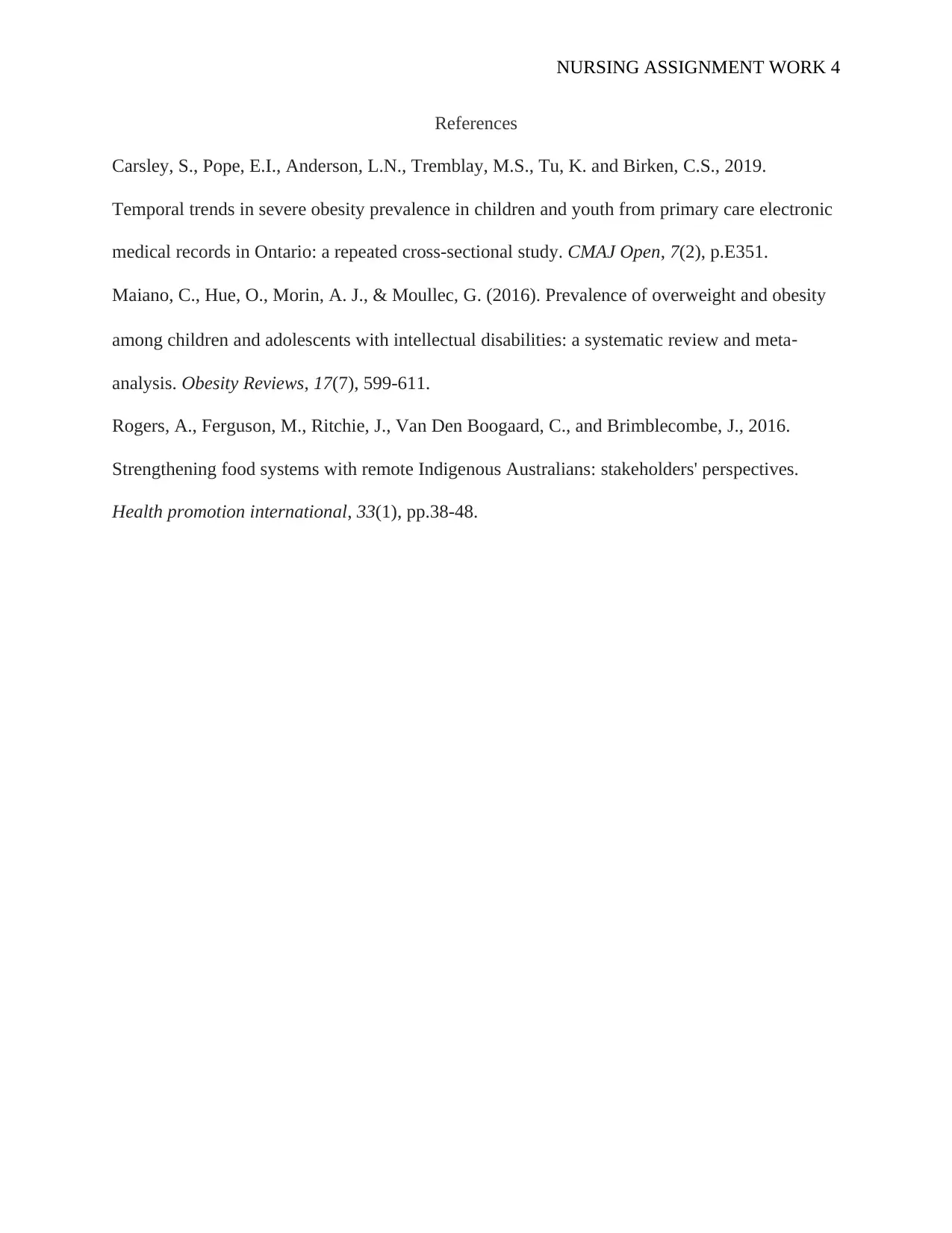Nursing Report: Obesity, Food Insecurity, and Sustainable Food Systems
VerifiedAdded on 2022/11/01
|4
|643
|412
Report
AI Summary
This report examines the escalating rates of obesity and food insecurity, particularly within the Australian context. It highlights the increasing public health concerns associated with the dual burden of these issues, especially among children and adolescents. The report emphasizes the importance of sustainable food systems as a strategy to address both food security and obesity. It explores the need for policy and science efforts to focus on environmental and systemic factors to manage obesity. The analysis underscores the complexity of food systems, encompassing economic, political, social, and environmental frameworks. By adopting a food systems approach, the report advocates for strategies that promote community food justice and public health success. The report also references supporting literature, including studies on obesity prevalence and the impact of food systems on health.
1 out of 4





![[object Object]](/_next/static/media/star-bottom.7253800d.svg)